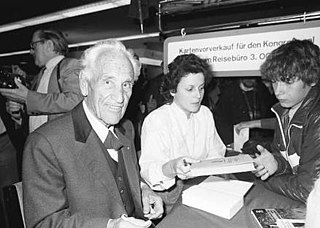
Luis Trenker was a South Tyrolean film producer, director, writer, actor, architect, alpinist, and bobsledder.
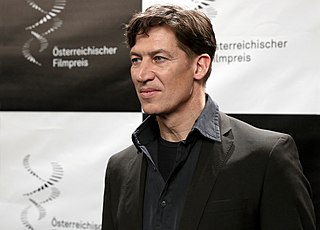
Tobias Moretti is an Austrian actor.
Paul Joseph Verhoeven was a German actor, as well as film and theatre director.

Der Kaiser von Kalifornien, is a 1936 film that was the first Western film made in Nazi Germany. Some exterior scenes were shot on location in the United States at Sedona, Arizona, the Grand Canyon, and Death Valley in California.
Giuseppe Becce was an Italian-born film score composer who enriched the German cinema.
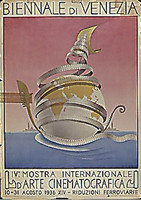
The 4th annual Venice International Film Festival was held between 10 and 31 August 1936. This year saw an international jury nominated for the first time.
The Mountain Calls is a film directed by Luis Trenker which recreates the struggle between Edward Whymper and Jean-Antoine Carrel for the first successful ascent of the Matterhorn in 1865.
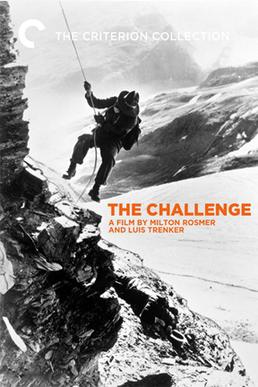
The Challenge is a 1938 British drama film directed by Milton Rosmer and Luis Trenker and starring Robert Douglas and Luis Trenker. The film is about the first successful ascent of the Matterhorn in 1865 by Edward Whymper.

The Rebel is a 1932 German historical drama film directed by Curtis Bernhardt, Edwin H. Knopf, and Luis Trenker and starring Trenker, Luise Ullrich, and Victor Varconi. The film's art direction was by Fritz Maurischat. It was made by the German subsidiary of Universal Pictures, with location shooting in Austria and St. Moritz, and Zuoz, Switzerland. Interior scenes were filmed at the Tempelhof Studios. A separate English language version, The Rebel, was released the following year. The film is part of the mountain film genre.
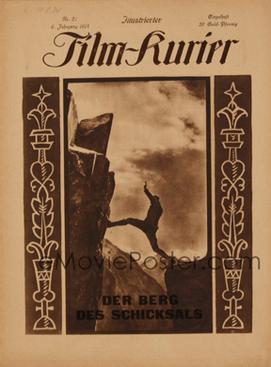
Mountain of Destiny is a 1924 German silent drama film written and directed by Arnold Fanck and starring Hannes Schneider, Frida Richard, Erna Morena, and Luis Trenker. The film is about an alpinist who falls to his death while climbing a dangerous peak. His son later succeeds where his father had failed. The film was released in the United Kingdom with the title The Mountaineers. After seeing Mountain of Destiny, Leni Riefenstahl, then a dancer, decided she wanted to start appearing in films. She got in touch with Fanck and starred in his 1926 film The Holy Mountain.

Mountains on Fire is a 1931 German war film directed by Karl Hartl and Luis Trenker and starring Trenker, Lissy Arna and Luigi Serventi. The film was developed from Luis Trenker's novel of the same title, partly based on his own experiences. Separate French and English-language productions were also made.
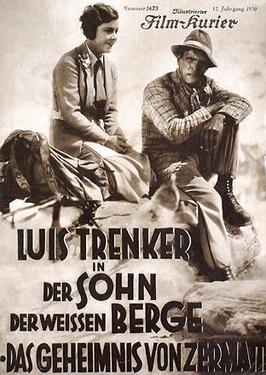
The Son of the White Mountain is a 1930 German mystery romance film directed by Mario Bonnard and Luis Trenker and starring Trenker, Maria Matray and Renate Müller. It was part of the popular series of Mountain films of the era. A separate French-language version was also released.
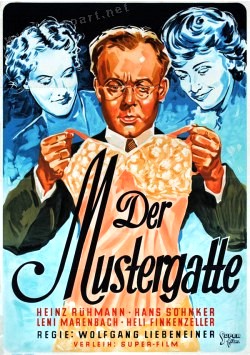
The Model Husband is a 1937 German comedy film directed by Wolfgang Liebeneiner and starring Heinz Rühmann, Leny Marenbach, and Hans Söhnker. It is based on a 1915 American play Fair and Warmer by Avery Hopwood. It was shot at the Johannisthal Studios in Berlin. The film's sets were designed by the art directors Otto Gülstorff and Hans Minzloff. The film was screened at the Venice Film Festival where it won an award. In the 1950s, it was remade twice: a 1956 West German film The Model Husband and a 1959 Swiss The Model Husband. The film was censored for youth by the Nazis.

Duty Is Duty is a 1931 German comedy film directed by Carl Boese and starring Fritz Spira, Ralph Arthur Roberts, and Maly Delschaft.

Eva in Silk is a 1928 German silent film directed by Carl Boese and starring Lissy Arna, Walter Rilla and Margarete Kupfer. It was shot at the National Studios in Berlin. The film's sets were designed by the art director Karl Machus.

His Best Friend is a 1962 West German drama film directed by Luis Trenker and starring Toni Sailer, Dietmar Schönherr and Hilti von Allmen.
The Count of Charolais is a 1922 German silent historical film directed by Karl Grune and starring Eva May, William Dieterle and Eugen Klöpfer. The film was adapted from the play of the same name by Richard Beer-Hofmann.
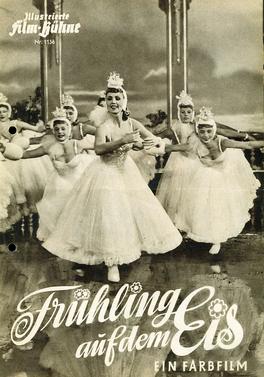
Spring on Ice is a 1951 Austrian musical comedy film directed by Georg Jacoby and starring Eva Pawlik, Herta Mayen and Hans Holt. It is set around the Vienna Ice Revue. The film was shot using Agfacolor at the Soviet-controlled Rosenhügel Studios in Vienna. The film's sets were designed by the art director Julius von Borsody.
The Princess of the Riviera is a 1926 German silent film directed by Géza von Bolváry.
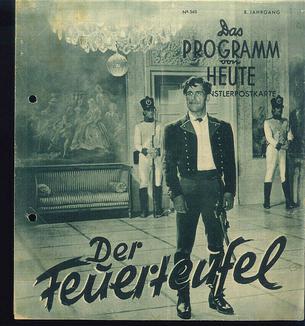
The Fire Devil is a 1940 German historical adventure film directed by and starring Luis Trenker. It also featured Judith Holzmeister, Bertl Schultes and Hilde von Stolz. The title is sometimes translated as The Arsonist.















